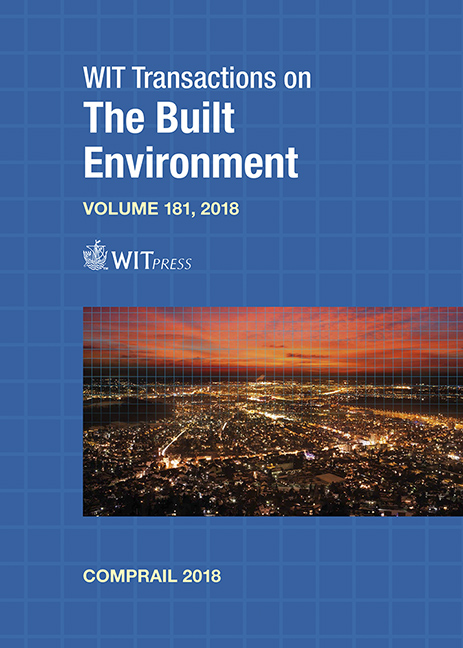PASSENGER FLOW ANALYSIS IN RAILWAY TRANSIT STATION BY POTENTIAL PATHLINE METHOD
Price
Free (open access)
Transaction
Volume
181
Pages
7
Page Range
191 - 197
Published
2018
Size
536 kb
Paper DOI
10.2495/CR180171
Copyright
WIT Press
Author(s)
SEONGWON NAM, JAEHO KWAK
Abstract
The pedestrian flow model is a design tool that can be applied to railway transit stations, multi complex buildings, shopping malls, and stadiums. In this study, a new numerical analysis method was developed to simulate pedestrian flow. It is a computational analysis method using the concept of potential – pathline. The domain to be analysed is divided into small calculation cells, and a potential value is gradually given starting from the exit cell. Based on the potential values, we can obtain the direction vector for each cell and draw the pathline following it. These pathlines are the basic routes for individual pedestrians to move between the origin and the destination. And then, pedestrian might changes the route according to the cell conditions of each location and moves to the destination. In this analytical method, visual angle, straightness probability, speed, and right-hand traffic can be used as parameters. It can also be applied to a three-dimensional interlayer movement model. Using the developed analysis program, we simulated about the passenger flow at the passageway of railway transit station and also compared Dirk Helbing’s result (Nature 2000) and found that the results of both methods are in good agreement.
Keywords
pedestrian flow, computational analysis, railway station, potential pathline





